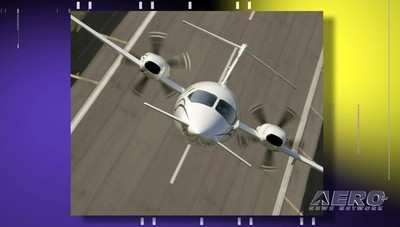AD 2023-25-03 Is Prompted By A Report Of Corrosion On The Various Aluminum Alloy Reinforcements In The Horizontal Stabilizer...
The FAA is adopting a new airworthiness directive (AD) for certain Piaggio Aviation S.p.A. (Piaggio) Model P–180 airplanes.

This AD is prompted by a report of corrosion on the various aluminum alloy reinforcements in the horizontal stabilizer (HS) central box caused by a humid environment inside the box from water ingress and/or condensation. This AD requires a one-time detailed inspection of the HS central box for corrosion; an assessment of the corrosion level; and depending on the determination, repetitive detailed inspections of the HS central box for corrosion and the internal composite structure for surface cracks, distortion, and damage; and repair or replacement of the HS assembly. Repair or replacement of the HS assembly is terminating action for the repetitive inspections. The FAA is issuing this AD to address the unsafe condition on these products.
This AD is effective February 2, 2024.
Supplementary Information: The FAA issued a notice of proposed rulemaking (NPRM) to amend 14 CFR part 39 by adding an AD that would apply to certain serial-numbered Piaggio Model P–180 airplanes. The NPRM published in the Federal Register on September 7, 2023 (88 FR 61482). The NPRM was prompted by AD 20230007, dated January 13, 2023 (also referred to as the MCAI), issued by the European Union Aviation Safety Agency (EASA), which is the Technical Agent for the Member States of the European Union. The MCAI states that an occurrence of corrosion was found inside the HS central box of a Piaggio Model P–180 airplane during scheduled maintenance. A subsequent investigation and inspection of 16 other Piaggio Model P–180 airplanes of various configurations and ages revealed that corrosion of differing levels of severity was found on various aluminum alloy reinforcements in the HS central box of all the inspected airplanes.

The MCAI also states that this corrosion was caused by the formation of a humid environment inside the HS central box, from water ingress and/or condensation. Further investigation revealed that airplanes left in prolonged inactivity or parked outside are more prone to develop corrosion damage. To address the unsafe condition, the MCAI requires a one-time detailed inspection of the HS central box for corrosion, contacting Piaggio for a determination of the corrosion level, and depending on that determination, repetitive detailed inspections of the HS central box for corrosion and the internal composite structure for surface cracks, distortion, and damage; and depending on the results, repair or replacement of the HS assembly. The MCAI states that repair or replacement of the HS assembly is terminating action for the repetitive inspections.
In the NPRM, the FAA proposed to require a one-time detailed inspection of the HS central box for corrosion; an assessment of the corrosion level; and depending on the determination, repetitive detailed inspections of the HS central box for corrosion and the internal composite structure for surface cracks, distortion, and damage; and repair or replacement of the HS assembly. Repair or replacement of the HS assembly is terminating action for the repetitive inspections. The FAA is issuing this AD to address corrosion on the various aluminum alloy reinforcements in the HS central box. The unsafe condition, if not addressed, could result in reduced structural integrity of the HS, and loss of control of the airplane.
You may examine the MCAI in the AD docket at regulations.gov under Docket No. FAA–2023–1819.
 A Crazy Tesla Flying Car is Coming
A Crazy Tesla Flying Car is Coming ANN's Daily Aero-Term (11.xx.25): NonApproach Control Tower
ANN's Daily Aero-Term (11.xx.25): NonApproach Control Tower Aero-News: Quote of the Day (11.01.25)
Aero-News: Quote of the Day (11.01.25) ANN's Daily Aero-Linx (11.01.25)
ANN's Daily Aero-Linx (11.01.25) Classic Aero-TV: EAA Introduces Angle of Attack Training
Classic Aero-TV: EAA Introduces Angle of Attack Training




